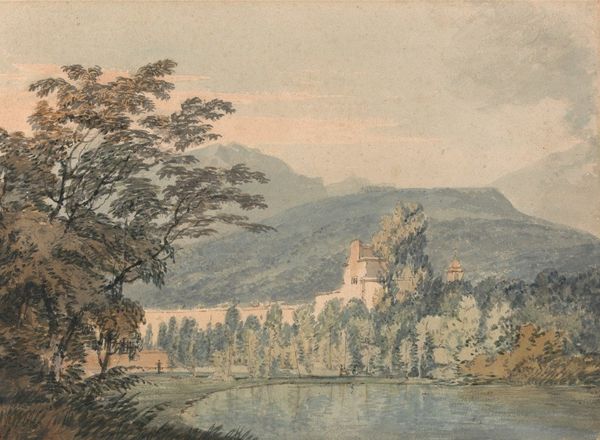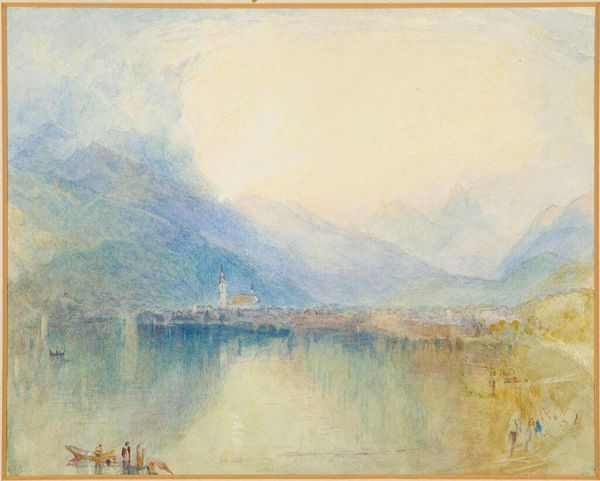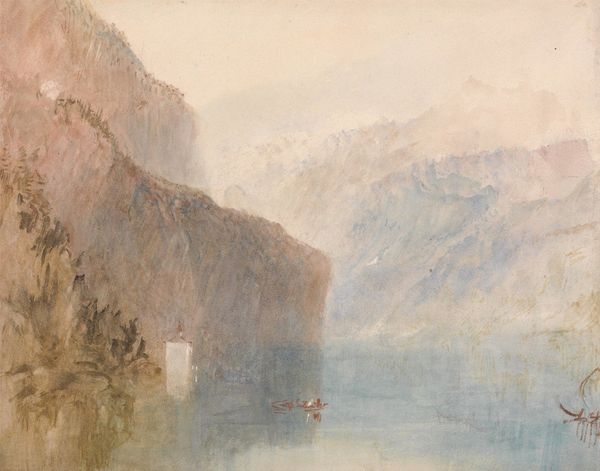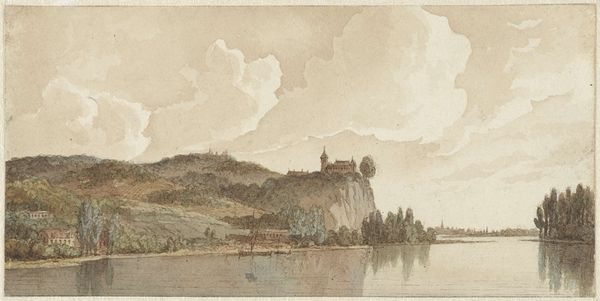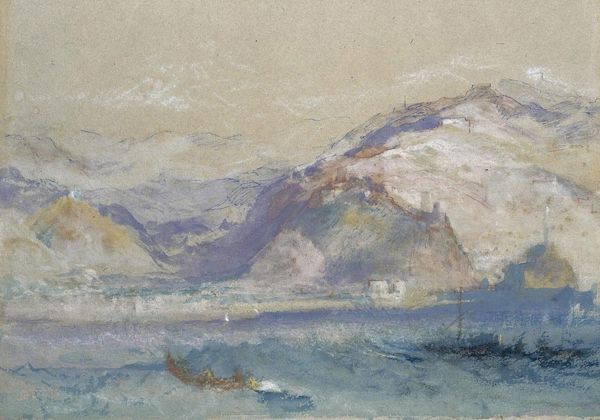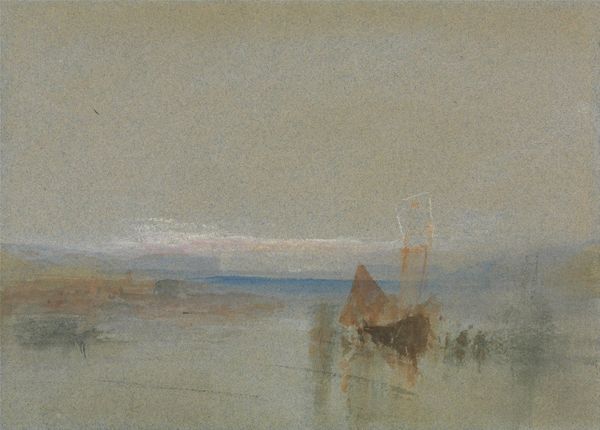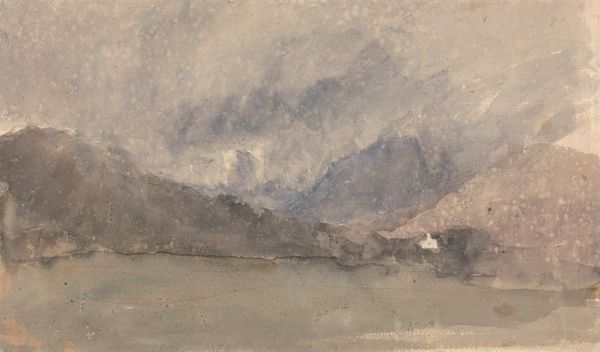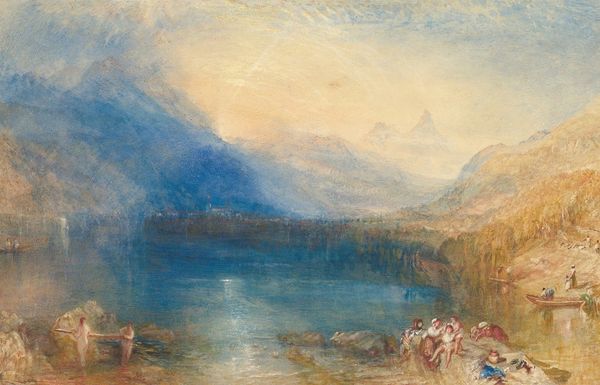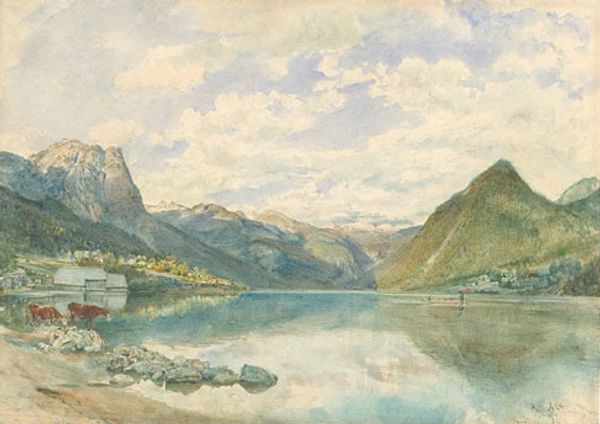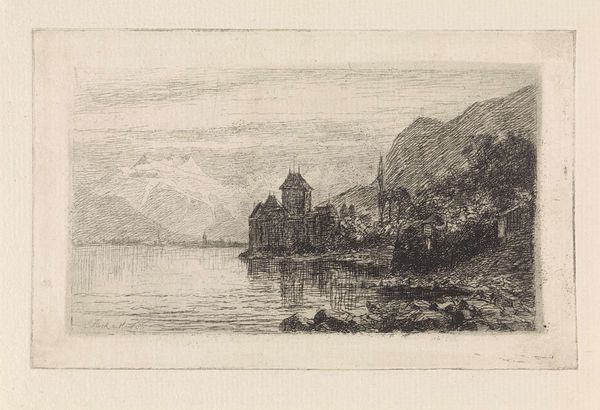
Copyright: Public domain
Editor: This is John Ruskin's "The Chateau of Neuchatel at dusk, with Jura mountains beyond," created in 1866. It’s a watercolor painting and there's this almost ethereal, dreamlike quality to it with the castle fading into the misty mountains. How do you interpret this work? Curator: Well, looking at Ruskin's choice of watercolor, a medium often associated with amateur artistry or preliminary sketches, challenges the conventional hierarchy separating ‘high art’ from more 'domestic' crafts. This watercolor, quickly and economically made, hints at both artistic labor and market accessibility, reflecting Ruskin’s broader social critiques. Note how he captures light, or perhaps more accurately, how light filters and fades—what does this reveal to you? Editor: It makes me think about how the materials themselves were used, and maybe even who had access to them at the time. Were watercolors widely available then? Was Ruskin making a statement by choosing this medium? Curator: Precisely. Watercolors were becoming more commercially accessible during the 19th century. Ruskin’s preference for this material suggests an attempt to democratize art, but also think about his access to higher quality pigments and paper compared to most people. This tension speaks volumes about artistic privilege and the means of artistic production. Do you consider his labor involved in this painting? Editor: That's interesting, I hadn't considered the level of labour. It appears to be spontaneous, almost effortless. Curator: Yet, a careful analysis shows otherwise. Observe how the textures were built using layers and layering techniques, possibly over several hours. The production, the choice of subject matter reflecting the changing societal views—everything is interlinked. Editor: So, beyond the beauty, it reveals underlying aspects of production and society. Curator: Exactly. And that intersection between artistic intention, accessible resources, social statement, and consumption is where the real substance of art often resides.
Comments
No comments
Be the first to comment and join the conversation on the ultimate creative platform.
